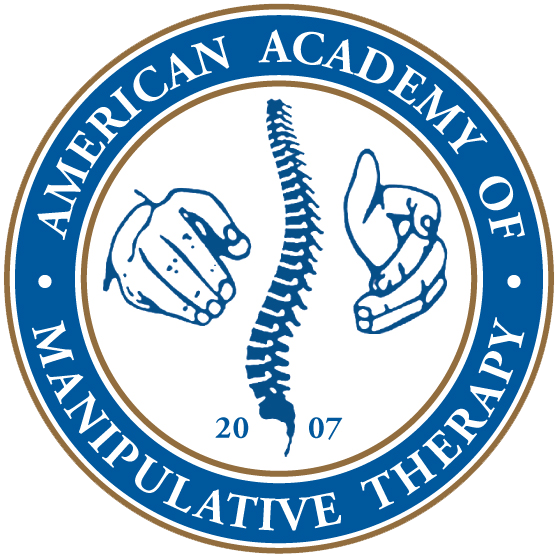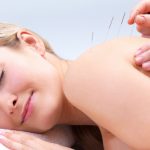Whole Body Cryotherapy: Counterproductive to Tissue Healing for Exercise-Induced Muscle Damage
Cryotherapy has been used for many years by healthcare professionals, coaches and athletes to minimize swelling and decrease pain following musculoskeletal damage.1 However, a recent systematic review concluded there is “insufficient evidence to suggest the use of ice/cryotherapy improves clinical outcomes.”2 As such, the acronyms ICE, RICE,3,4 PRICE and POLICE5 have recently been questioned because of their inclusion of cryotherapy.2,3,5,6
CRYOTHERAPY FOR PAIN
Several studies have reported positive findings supporting the use of ice for reducing pain.1,7-9 Intermittent applications (i.e. three, 10 minute applications with 10 minute recovery intervals) resulted in more effective pain reduction than common 20 minute applications.1,10 Intermittent applications of cryotherapy combined with compression have also been shown to be effective in both reducing pain and achieving sustained, deep circulation flow reductions during recovery.10
CRYOTHERAPY FOR EXERCISE-INDUCED SORENESS
- COLD WATER IMMERSION
While Cold Water Immersion (CWI) has been linked with increased heart rate, blood pressure, respiratory minute volume and metabolism, it has been shown to decrease end tidal carbon dioxide partial pressure and cerebral blood flow.11 Increases in peripheral catecholamine, free-radical-species formation and oxidative stress have also been reported.11 In addition, CWI has been shown to attenuate immunomodulating chemokine CCL2 plasma concentration12, which promotes healing by stimulating macrophage activity13. Furthermore, CWI has been linked with decreased tissue oxygenation,14 a factor considered predictive of tissue healing.15
Nevertheless, several studies report modest improvements in enhanced function with brief applications of CWI following exercise or training.14,16-18 A recent systematic review and meta-analysis concluded, “available evidence suggests that CWI can be slightly better than passive recovery in the management of muscle soreness”. Furthermore, a dose-response relationship suggests that CWI between 11°C and 15°C at an immersion duration of 11-15 min leads to optimal outcomes.19 Notably, these findings are consistent with a 2015 meta-analysis of 36 studies that concluded there is a significant improvement in the symptoms associated with Delayed Onset Muscle Soreness (DOMS) following CWI. Nevertheless, no improvements in objective recovery variables were found following CWI during a 96-hour recovery period.20 While Yeung et al found CWI attenuated a reduction in tissue oxygenation by 4% and decreased muscle soreness 24 hours after testing, CWI had no effect on muscle performance during subsequent exercise.14
- WHOLE BODY CRYOTHERAPY
Whole Body Cryotherapy (WBC) is a relatively new trend that attempts to cool the entire body in a short period of time in order to improve blood flow, metabolism, recovery following workouts and pain secondary to a number of conditions. However, WBC has not been cleared or approved by the Food and Drug Administration (FDA), as there is “very little evidence about its safety or effectiveness in treating the conditions for which it is being promoted.”21 More specifically, there is insufficient evidence to determine whether WBC decreases muscle soreness or improves recovery following exercise better than passive rest or no WBC in young-adult males.22 Moreover, 24 hours after eccentric exercise, WBC was ineffective at reducing muscle soreness or enhancing muscle force recovery.23 In a more recent study on professional soccer players, WBC increased testosterone 2 and 24 hours post activity, but it did not change athletic performance.24
- ICE MASSAGE
While ice massage has been shown to reduce plasma creatine kinase, it was found to be ineffective at reducing factors associated with muscle damage.25 In addition, ice massage was unable to enhance muscle recovery in male exercisers unaccustomed to eccentric training.25
CRYOTHERAPY: SWELLING & INFLAMMATION
Several studies have reported reductions in swelling with cryotherapy secondary to vasoconstriction and post capillary venous flow.26-29 However, a correlation between skin temperature reductions and systemic vasoconstriction have only been observed following hyperbaric gaseous cryotherapy and not topical ice pack application.30 A systematic review concluded that icing may decrease motor performance and reverse lymphatic flow, thereby increasing extra vascular inflammation.31 In another systematic review, icing was found to not have any greater effect on swelling and range of motion than electrical stimulation or no form of cryotherapy.32 A number of studies have also suggested that prolonged cryotherapy may place tissue at significant risk for non-freezing cold injury (NFCI), a condition characterized by tissue necrosis and neuropathy due to prolonged vasoconstriction and ischemia, which persists even after tissue re-warming.26,33
CRYOTHERAPY: TISSUE REPAIR
Various types and/or parameters of cryotherapy have been found ineffective in speeding up recovery following exercise induced muscle soreness.9,20,34-36 The efficacy of cryotherapy must be questioned, as there is “little evidence to suggest that the addition of ice to compression has any significant effect”.7 Another systematic review concluded, “there is insufficient evidence to suggest that cryotherapy improves clinical outcomes in the management of soft tissue injuries.”6 Moreover, following 15 minutes of cryotherapy immediately following 3, 24, 48, and 72 hours after exercise, compared to controls, increased factors associated with muscle cell damage (i.e. CK-MB and myoglobin) were found. In addition, investigators found a peak shift in IL-12p70, a cytokine important for stem cell recruitment and tissue regeneration, and subjective increases in fatigue compared to control.
Collectively, this data suggests that cryotherapy may actually delay recovery of eccentric, exercise-induced muscle damage.37 It is perhaps worth noting that warming tissues to 100°F was found to lead to faster recovery and improved performance after muscle soreness, whereas icing was found to delay recovery and performance.36 Remarkably, a double-blind randomized controlled trial found tissue heating via Photobiomodulation therapy (PBMT) improved recovery rates and muscle performance better than PBMT + cryotherapy or cryotherapy alone.38 Moreover, PBMT + cryotherapy and cryotherapy alone did not aide in post-exercise recovery more than placebo.38
CRYOTHERAPY MAY BE COUNTERPRODUCTIVE TO TISSUE HEALING
The use of cryotherapy to reduce inflammation, blood flow and metabolism may not be beneficial for tissue healing. In reality, cryotherapy may reverse lymphatic flow, thereby increasing inflammation, impairing coagulation and leading to cell death.31,32 Although the increase in vasoconstriction shunts pro-inflammatory factors, it also may limit the reparative actions of cells that serve dual roles. For example, using cryotherapy to inhibit neutrophils may seem like an appropriate strategy as neutrophils aide in tissue degeneration.39 However, neutrophils are also responsible for kick-starting reparative processes that are later managed by macrophages.39 Prostaglandins further contribute to chronic inflammation, but are also responsible for tissue remodeling, angiogenesis, fibrosis40 and, ultimately, resolution of inflammation.41 Similarly, M1 macrophages secrete inflammatory cytokines, while M2 macrophages promote anti-inflammation and repair.42 Interestingly, a number of studies have found that the use of NSAIDs immediately following an injury interrupt both inflammatory and repair processes, resulting in prolonged healing and suboptimal tissue repair.43-46
In contrast, increasing factors associated with inflammation-repair pathways has been shown to facilitate healing and functional recovery. For example, enhancement of platelets in damaged tissue has been shown to facilitate repair of soft tissue in animal models,47-49 and in humans with plantar fasciitis,50-52 rotator cuff recovery,53 hamstring tendinopathy,54 lateral epicondylitis,55 knee osteoarthritis,56,57 and ACL reconstruction.58 In addition, there are five main growth factors (i.e. IGF-I, TGFb, VEGF, PDGF and bFGF) that are crucial for tendon and ligament repair. Given that many of these factors are unregulated during the inflammatory phase of healing, cryotherapy may be counterproductive.58
AUTHORS:
Dr. Craig Hadfield, DPT, Cert. DN
Fellow-in-Training, AAMT Fellowship in Orthopedic Manual Physical Therapy
Physical Therapist, Proactive Rehabilitation and Fitness
Pinedale, WY
Dr. Raymond Butts, PhD, DPT, MS, Dip. Osteopractic, MAACP (UK)
Senior Faculty, AAMT Fellowship in Orthopaedic Manual Physical Therapy
Atlanta, GA
REFERENCES:
- Bleakley CM, McDonough SM, MacAuley DC, Bjordal J. Cryotherapy for acute ankle sprains: a randomised controlled study of two different icing protocols. Br J Sports Med. 2006;40(8):700-705; discussion 705.
- Boyce SH. Ice/cryotherapy and management of soft tissue injuries. Emerg Med J. 2009;26(1):76.
- van den Bekerom MP, Struijs PA, Blankevoort L, Welling L, van Dijk CN, Kerkhoffs GM. What is the evidence for rest, ice, compression, and elevation therapy in the treatment of ankle sprains in adults? J Athl Train. 2012;47(4):435-443.
- Hing WP, Lopes JM, Hume PAP, Reid DAD. Comparison of multimodal physiotherapy and “R.I.C.E.” self-treatment for early management of ankle sprains. New Zealand Journal of Physiotherapy. 2011;39(1):13-19.
- Bleakley CM, Glasgow P, MacAuley DC. PRICE needs updating, should we call the POLICE? Br J Sports Med. 2012;46(4):220-221.
- Collins NC. Is ice right? Does cryotherapy improve outcome for acute soft tissue injury? Emerg Med J. 2008;25(2):65-68.
- Hubbard TJ, Denegar CR. Does Cryotherapy Improve Outcomes With Soft Tissue Injury? J Athl Train. 2004;39(3):278-279.
- Costantino C, Pogliacomi F, Vaienti E. Cryoultrasound therapy and tendonitis in athletes: a comparative evaluation versus laser CO2 and t.e.ca.r. therapy. Acta bio-medica : Atenei Parmensis. 2005;76(1):37-41.
- Pointon M, Duffield R, Cannon J, Marino FE. Cold application for neuromuscular recovery following intense lower-body exercise. Eur J Appl Physiol. 2011;111(12):2977-2986.
- Knobloch K, Grasemann R, Jagodzinski M, Richter M, Zeichen J, Krettek C. Changes of Achilles midportion tendon microcirculation after repetitive simultaneous cryotherapy and compression using a Cryo/Cuff. The American journal of sports medicine. 2006;34(12):1953-1959.
- Bleakley CM, Davison GW. What is the biochemical and physiological rationale for using cold-water immersion in sports recovery? A systematic review. Br J Sports Med. 2010;44(3):179-187.
- Crystal NJ, Townson DH, Cook SB, LaRoche DP. Effect of cryotherapy on muscle recovery and inflammation following a bout of damaging exercise. Eur J Appl Physiol. 2013;113(10):2577-2586.
- Wood S, Jayaraman V, Huelsmann EJ, et al. Pro-inflammatory chemokine CCL2 (MCP-1) promotes healing in diabetic wounds by restoring the macrophage response. PLoS One. 2014;9(3):e91574.
- Yeung SS, Ting KH, Hon M, et al. Effects of Cold Water Immersion on Muscle Oxygenation During Repeated Bouts of Fatiguing Exercise: A Randomized Controlled Study. Medicine (Baltimore). 2016;95(1):e2455.
- Bohling M. The Role of the Feline Subcutis in Wound Healing. Feline Soft Tissue and General surgery: Saunders; 2014:729-746.
- Machado AF, Ferreira PH, Micheletti JK, et al. Can Water Temperature and Immersion Time Influence the Effect of Cold Water Immersion on Muscle Soreness? A Systematic Review and Meta-Analysis. Sports Med. 2016;46(4):503-514.
- Aba‚àö√òdia AE, Lamblin J, Delecroix B, et al. Recovery From Exercise-Induced Muscle Damage: Cold Water Immersion Versus Whole Body Cryotherapy. Int J Sports Physiol Perform. 2016:1-23.
- Machado AF, Almeida AC, Micheletti JK, et al. Dosages of cold-water immersion post exercise on functional and clinical responses: a randomized controlled trial. Scand J Med Sci Sports. 2016.
- Machado AF, Ferreira PH, Micheletti JK, et al. Can Water Temperature and Immersion Time Influence the Effect of Cold Water Immersion on Muscle Soreness? A Systematic Review and Meta-Analysis. Sports Med. 2016;46(4):503-514.
- Hohenauer E, Taeymans J, Baeyens JP, Clarys P, Clijsen R. The Effect of Post-Exercise Cryotherapy on Recovery Characteristics: A Systematic Review and Meta-Analysis. PLoS One. 2015;10(9):e0139028.
- Administration USFaD. 2018. Accessed June 23, 2018, 2018.
- Costello JT, Baker PR, Minett GM, Bieuzen F, Stewart IB, Bleakley C. Whole-body cryotherapy (extreme cold air exposure) for preventing and treating muscle soreness after exercise in adults. Cochrane Database Syst Rev. 2015(9):CD010789.
- Costello JT, Algar LA, Donnelly AE. Effects of whole-body cryotherapy (-110 °C) on proprioception and indices of muscle damage. Scand J Med Sci Sports. 2012;22(2):190-198.
- Russell M, Birch J, Love T, et al. The effects of a single whole body cryotherapy exposure on physiological, performance and perceptual responses of professional academy soccer players following repeated sprint exercise. J Strength Cond Res. 2016.
- Howatson G, Van Someren KA. Ice massage. Effects on exercise-induced muscle damage. J Sports Med Phys Fitness. 2003;43(4):500-505.
- Khoshnevis S, Craik NK, Matthew Brothers R, Diller KR. Cryotherapy-Induced Persistent Vasoconstriction After Cutaneous Cooling: Hysteresis Between Skin Temperature and Blood Perfusion. Journal of biomechanical engineering. 2016;138(3):4032126.
- Knobloch K, Grasemann R, Spies M, Vogt PM. Midportion achilles tendon microcirculation after intermittent combined cryotherapy and compression compared with cryotherapy alone: a randomized trial. The American journal of sports medicine. 2008;36(11):2128-2138.
- Lee H, Natsui H, Akimoto T, Yanagi K, Ohshima N, Kono I. Effects of cryotherapy after contusion using real-time intravital microscopy. Med Sci Sports Exerc. 2005;37(7):1093-1098.
- Knobloch K, Grasemann R, Spies M, Vogt PM. Intermittent KoldBlue cryotherapy of 3×10 min changes mid-portion Achilles tendon microcirculation. British journal of sports medicine. 2007;41(6):e4.
- Mourot L, Cluzeau C, Regnard J. Hyperbaric gaseous cryotherapy: effects on skin temperature and systemic vasoconstriction. Archives of physical medicine and rehabilitation. 2007;88(10):1339-1343.
- Meeusen R, Lievens P. The use of cryotherapy in sports injuries. Sports Med. 1986;3(6):398-414.
- Bleakley C, McDonough S, MacAuley D. The use of ice in the treatment of acute soft-tissue injury: a systematic review of randomized controlled trials. Am J Sports Med. 2004;32(1):251-261.
- Khoshnevis S, Craik NK, Diller KR. Cold-induced vasoconstriction may persist long after cooling ends: an evaluation of multiple cryotherapy units. Knee surgery, sports traumatology, arthroscopy : official journal of the ESSKA. 2015;23(9):2475-2483.
- Paddon-Jones DJ, Quigley BM. Effect of cryotherapy on muscle soreness and strength following eccentric exercise. Int J Sports Med. 1997;18(8):588-593.
- Howatson G, Gaze D, van Someren KA. The efficacy of ice massage in the treatment of exercise-induced muscle damage. Scand J Med Sci Sports. 2005;15(6):416-422.
- Cheng AJ, Willis SJ, Zinner C, et al. Post-exercise recovery of contractile function and endurance in humans and mice is accelerated by heating and slowed by cooling skeletal muscle. J Physiol. 2017.
- Tseng CY, Lee JP, Tsai YS, et al. Topical cooling (icing) delays recovery from eccentric exercise-induced muscle damage. J Strength Cond Res. 2013;27(5):1354-1361.
- de Paiva PR, Tomazoni SS, Johnson DS, et al. Photobiomodulation therapy (PBMT) and/or cryotherapy in skeletal muscle restitution, what is better? A randomized, double-blinded, placebo-controlled clinical trial. Lasers Med Sci. 2016;31(9):1925-1933.
- Butterfield TA, Best TM, Merrick MA. The dual roles of neutrophils and macrophages in inflammation: a critical balance between tissue damage and repair. J Athl Train. 2006;41(4):457-465.
- Aoki T, Narumiya S. Prostaglandins and chronic inflammation. Trends Pharmacol Sci. 2012;33(6):304-311.
- Ricciotti E, FitzGerald GA. Prostaglandins and inflammation. Arterioscler Thromb Vasc Biol. 2011;31(5):986-1000.
- Sluka KA. Macrophages are Key Players in Pain and Analgesia. 2017; https://www.bodyinmind.org/macrophages-pain-analgesia/. Accessed 1/19/2017.
- Cottrell J, O’Connor JP. Effect of Non-Steroidal Anti-Inflammatory Drugs on Bone Healing. Pharmaceuticals (Basel). 2010;3(5):1668-1693.
- Dimmen S, Nordsletten L, Engebretsen L, Steen H, Madsen JE. The effect of parecoxib and indometacin on tendon-to-bone healing in a bone tunnel: an experimental study in rats. J Bone Joint Surg Br. 2009;91(2):259-263.
- Dimmen S, Nordsletten L, Madsen JE. Parecoxib and indomethacin delay early fracture healing: a study in rats. Clin Orthop Relat Res. 2009;467(8):1992-1999.
- Dimmen S, Engebretsen L, Nordsletten L, Madsen JE. Negative effects of parecoxib and indomethacin on tendon healing: an experimental study in rats. Knee Surg Sports Traumatol Arthrosc. 2009;17(7):835-839.
- Aspenberg P, Virchenko O. Platelet concentrate injection improves Achilles tendon repair in rats. Acta Orthop Scand. 2004;75(1):93-99.
- Allahverdi A, Sharifi D, Takhtfooladi MA, Hesaraki S, Khansari M, Dorbeh SS. Evaluation of low-level laser therapy, platelet-rich plasma, and their combination on the healing of Achilles tendon in rabbits. Lasers Med Sci. 2015;30(4):1305-1313.
- Chiou GJ, Crowe C, McGoldrick R, Hui K, Pham H, Chang J. Optimization of an injectable tendon hydrogel: the effects of platelet-rich plasma and adipose-derived stem cells on tendon healing in vivo. Tissue Eng Part A. 2015;21(9-10):1579-1586.
- Chiew SK, Ramasamy TS, Amini F. Effectiveness and relevant factors of platelet-rich plasma treatment in managing plantar fasciitis: A systematic review. J Res Med Sci. 2016;21:38.
- Say F, Gürler D, İnkaya E, Bülbül M. Comparison of platelet-rich plasma and steroid injection in the treatment of plantar fasciitis. Acta Orthop Traumatol Turc. 2014;48(6):667-672.
- Wilson JJ, Lee KS, Miller AT, Wang S. Platelet-rich plasma for the treatment of chronic plantar fasciopathy in adults: a case series. Foot Ankle Spec. 2014;7(1):61-67.
- D’Ambrosi R, Palumbo F, Paronzini A, Ragone V, Facchini RM. Platelet-rich plasma supplementation in arthroscopic repair of full-thickness rotator cuff tears: a randomized clinical trial. Musculoskelet Surg. 2016;100(Suppl 1):25-32.
- Davenport KL, Campos JS, Nguyen J, Saboeiro G, Adler RS, Moley PJ. Ultrasound-Guided Intratendinous Injections With Platelet-Rich Plasma or Autologous Whole Blood for Treatment of Proximal Hamstring Tendinopathy: A Double-Blind Randomized Controlled Trial. J Ultrasound Med. 2015;34(8):1455-1463.
- Gautam VK, Verma S, Batra S, Bhatnagar N, Arora S. Platelet-rich plasma versus corticosteroid injection for recalcitrant lateral epicondylitis: clinical and ultrasonographic evaluation. J Orthop Surg (Hong Kong). 2015;23(1):1-5.
- Khoshbin A, Leroux T, Wasserstein D, et al. The efficacy of platelet-rich plasma in the treatment of symptomatic knee osteoarthritis: a systematic review with quantitative synthesis. Arthroscopy. 2013;29(12):2037-2048.
- Paterson KL, Nicholls M, Bennell KL, Bates D. Intra-articular injection of photo-activated platelet-rich plasma in patients with knee osteoarthritis: a double-blind, randomized controlled pilot study. BMC Musculoskelet Disord. 2016;17:67.
- Molloy T, Wang Y, Murrell G. The roles of growth factors in tendon and ligament healing. Sports Med. 2003;33(5):381-394.






